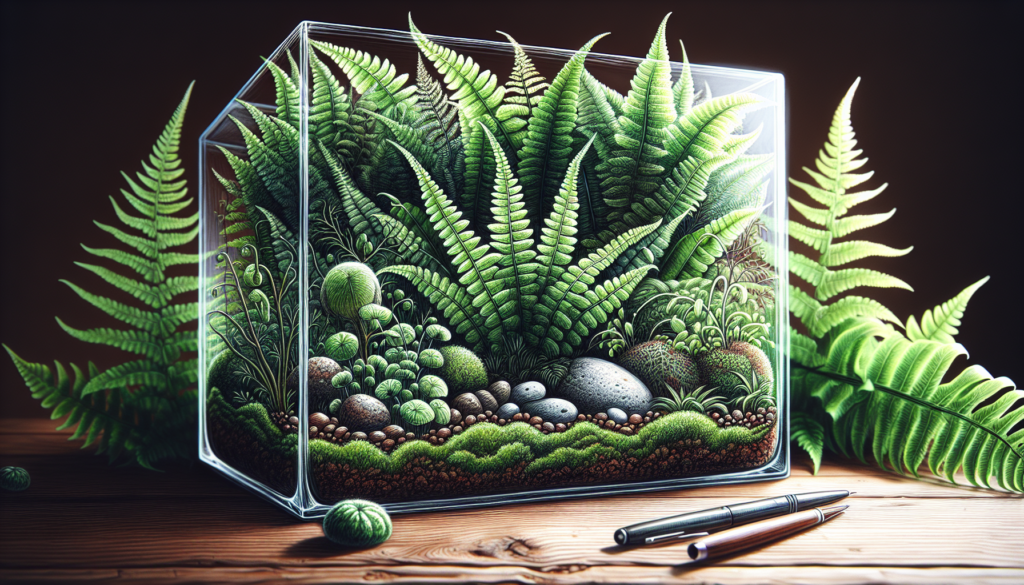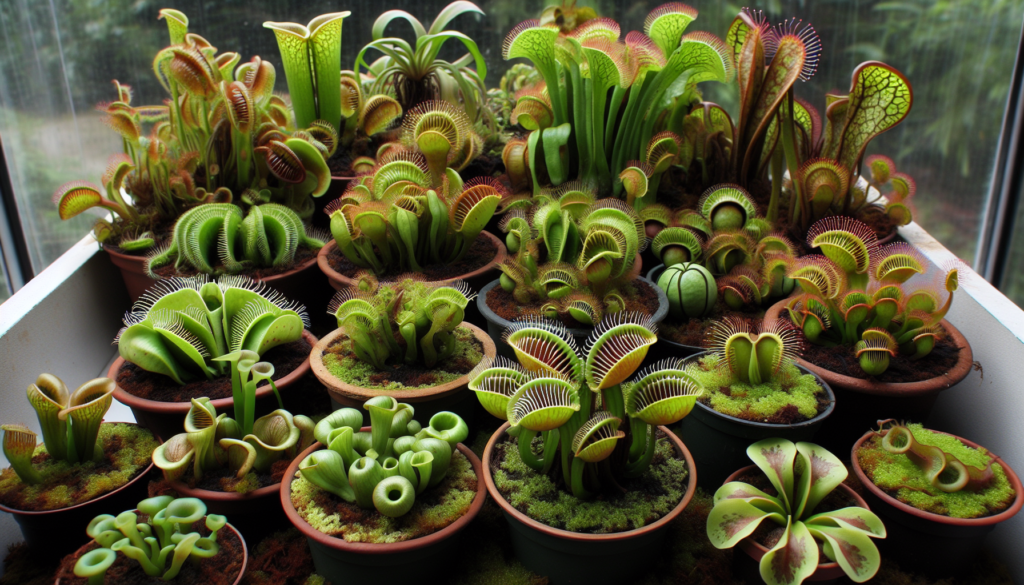To plant a lavender hedge, choose the right variety, prepare well-draining soil in a sunny spot, plant the lavender at intervals that accommodate growth, and water moderately; reasons include its beauty, fragrance, environmental benefits, and ease of maintenance.
This guide covers the entire process of planting a lavender hedge, from selecting varieties and preparing soil to maintenance, highlighting its benefits for health and environment, along with design ideas and solutions to common problems.
Perfect for any gardener eager to create a stunning, aromatic addition to their outdoor space, it promises a captivating garden feature.
Choose the Right Lavender Varieties for Your Hedge
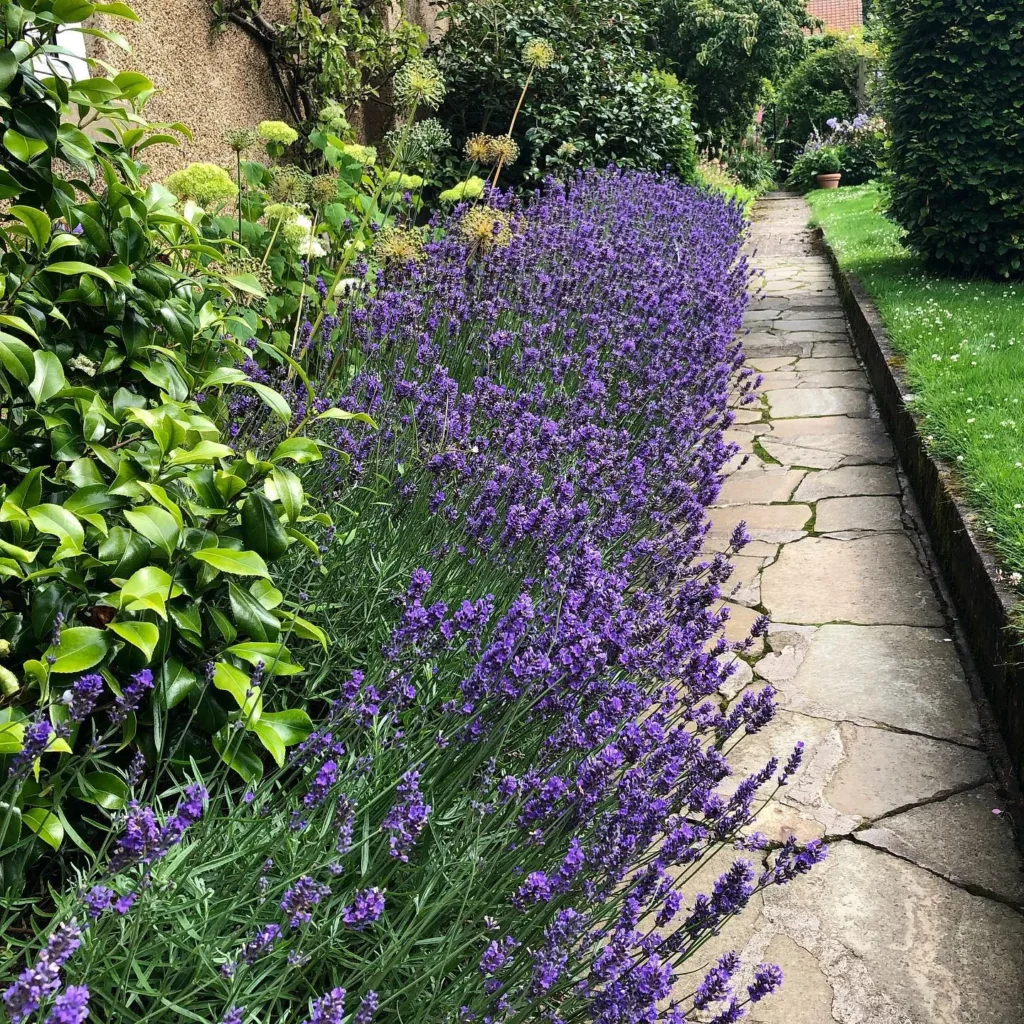
Before you start planting your lavender hedge, it is important to choose the right lavender varieties that are suitable for hedging. When selecting lavender plants for your hedge, consider factors such as height, fragrance, and hardiness. Different lavender varieties offer unique characteristics that can enhance the overall beauty and functionality of your hedge.
Factors to Consider when Choosing Lavender Varieties for Your Hedge:
- Height: Determine the desired height for your lavender hedge. Some varieties, such as Lavandula angustifolia ‘Hidcote’ and Lavandula intermedia ‘Grosso’, are taller and provide more privacy, while others, like Lavandula angustifolia ‘Munstead’ and Lavandula stoechas ‘Hazel’, are more compact and suitable for shorter hedges.
- Fragrance: Lavender is renowned for its delightful scent. Consider the fragrance characteristics of different lavender varieties to choose the aroma that best suits your preferences and garden ambiance. Lavandula angustifolia ‘Royal Velvet’ and Lavandula x intermedia ‘Provence’ are known for their strong, classic lavender fragrance.
- Hardiness: Ensure that the lavender varieties you select are appropriate for your climate and growing conditions. Some varieties, like Lavandula angustifolia ‘Munstead’, are more cold-hardy and can withstand harsh winters, while others, such as Lavandula stoechas ‘Anouk’, thrive in warmer regions.
Find the Perfect Location for Your Lavender Hedge
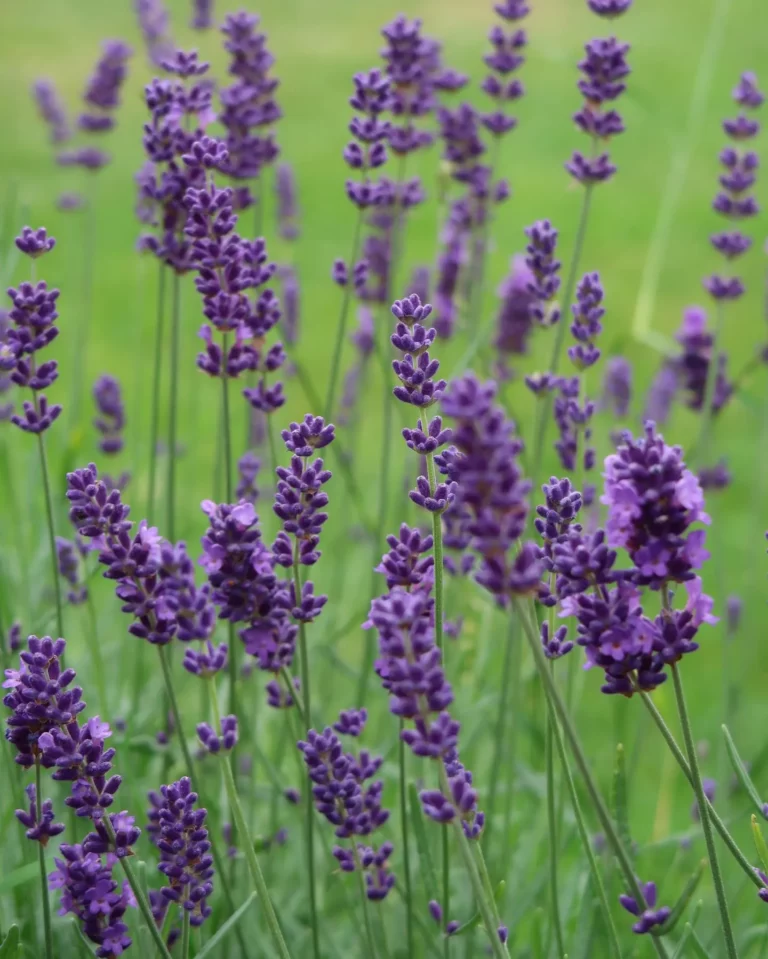
Choosing the right location is crucial for the success of your lavender hedge. Consider these key factors to find the perfect spot for your aromatic addition:
- Sunlight: Lavender thrives in full sun, so choose a location that receives at least 6-8 hours of direct sunlight daily.
- Soil Conditions: Lavender prefers well-draining soil with a pH level of 6.5 to 7.5. Test your soil’s pH and make amendments if necessary.
- Proximity to Other Plants: Avoid planting your lavender hedge near trees or shrubs that can create shade or compete for resources. Space the lavender plants adequately to promote healthy growth.
Prepare the Soil for Planting Your Lavender Hedge

Proper soil preparation is essential for the successful growth and establishment of your lavender hedge. By taking the time to prepare the soil, you’ll create an optimal environment for your plants to thrive. Follow these steps to ensure your lavender hedge gets off to the right start:
- Test the Soil pH: Lavender thrives in slightly acidic to neutral soil with a pH level between 6.5 and 7.5. Test your soil using a pH testing kit to determine its current pH level.
- Amend the Soil: If your soil pH is too low (acidic), add lime to raise the pH level. If the pH is too high (alkaline), add sulfur to lower the pH level. Follow the manufacturer’s instructions for the proper amounts to use.
- Improve Drainage: Lavender plants prefer well-draining soil. If your soil is clay-like or retains water, you’ll need to improve its drainage. One way to do this is by adding organic matter such as compost or peat moss to the soil.
- Enrich with Organic Matter: Lavender plants benefit from nutrient-rich soil. Before planting, incorporate organic matter into the soil to provide essential nutrients. Well-rotted compost or aged manure are excellent choices for enriching the soil.
Planting Your Lavender Hedge

Now that you’ve chosen the right lavender varieties and prepared the soil, it’s time to start planting your lavender hedge. Follow these steps to ensure a successful and thriving lavender hedge in your garden.
1. Determine the Spacing
Spacing is an important factor in the growth and health of your lavender hedge. Generally, it’s recommended to space the lavender plants about 2-3 feet apart. This allows adequate airflow and sunlight penetration, preventing diseases and ensuring even growth.
2. Dig the Holes
Before planting, dig holes that are slightly wider and deeper than the lavender root ball. This helps the roots spread out and establish themselves more easily. Ensure that the holes are spaced according to your desired lavender hedge design.
3. Place and Secure the Plants
Gently remove the lavender plants from their containers and place them in the prepared holes. Ensure that the top of the root ball is level with or slightly above the surrounding soil. Backfill the holes with soil, pressing it firmly around the roots to secure the plants in place.
4. Water Thoroughly
After planting, water the lavender hedge deeply and thoroughly. This helps settle the soil around the roots and provides essential hydration for the newly planted lavender plants. Keep the soil consistently moist but not waterlogged during the first few weeks of establishment.
5. Mulch to Retain Moisture
Apply a layer of organic mulch around the lavender plants to help retain moisture, suppress weed growth, and regulate soil temperature. Ensure that the mulch is not directly touching the stems to prevent rotting. Replenish the mulch as needed throughout the growing season.
Watering and Mulching Your Lavender Hedge
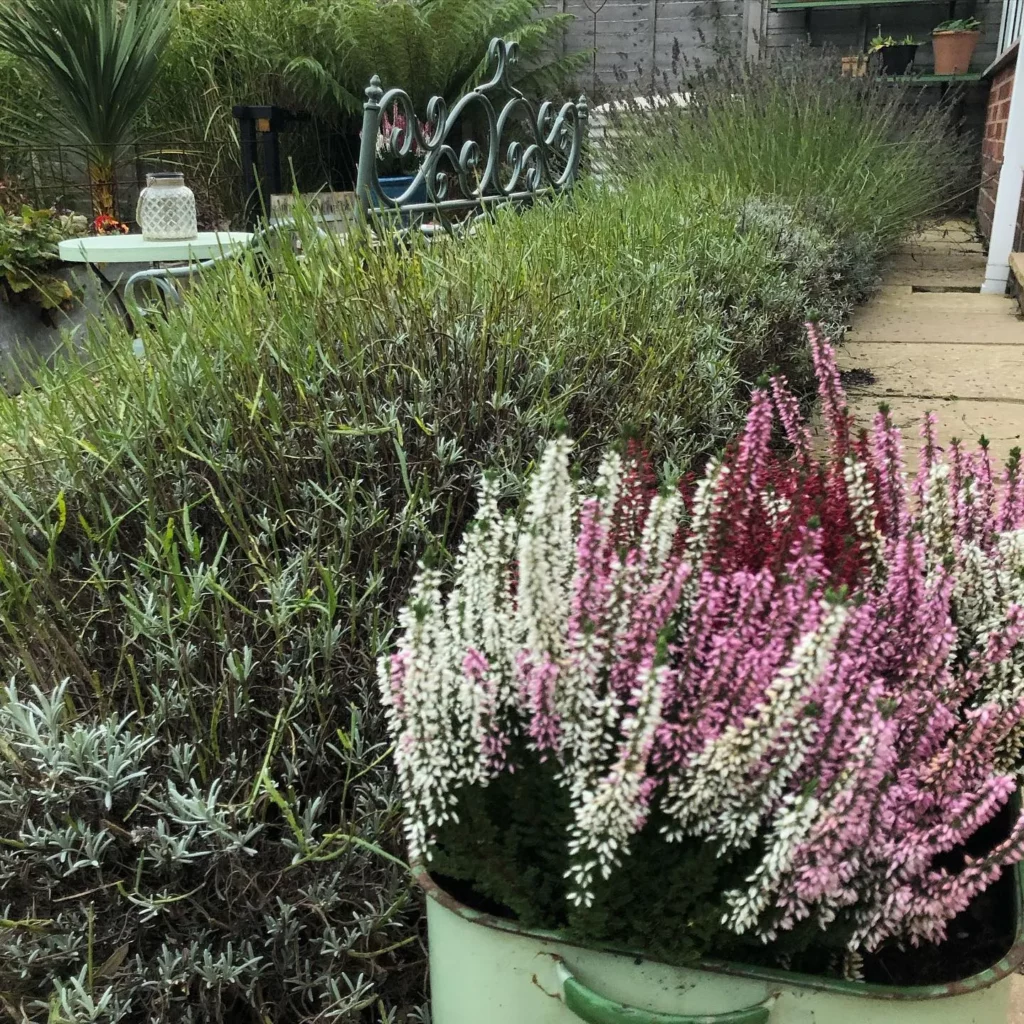
After planting your lavender hedge, it is crucial to provide the right amount of water to ensure its growth and health. Lavender plants have specific watering needs that must be met to thrive. Additionally, mulching is an essential practice that can benefit your lavender hedge in various ways.
Watering Lavender Hedge
Lavender plants prefer dry conditions, so it’s important not to overwater them. Overwatering can lead to root rot and other diseases. On the other hand, underwatering can cause the plants to wither and suffer from drought stress.
To water your lavender hedge effectively, follow these guidelines:
- Establish a watering schedule: In the first few weeks after planting, water your lavender hedge deeply at least once or twice a week. As the plants become established, gradually reduce the frequency to once a week or every 10 days, depending on the weather conditions.
- Water the base of the plants: Direct the water towards the base of the plants, aiming to wet the root zone. Avoid watering the foliage, as it can increase the risk of fungal diseases.
- Provide deep watering: Water the lavender hedge deeply, allowing the water to penetrate the soil to a depth of at least 6 inches. This encourages the roots to grow deeper and promotes drought tolerance.
- Monitor moisture levels: Regularly check the moisture level of the soil by inserting your finger about an inch below the surface. If it feels dry at this depth, it’s time to water. If it feels moist, wait a few more days before watering.
Mulching Lavender Hedge
Mulching is an essential practice that can provide numerous benefits to your lavender hedge. It helps regulate soil moisture, suppresses weed growth, and protects the plant’s roots from extreme temperatures.
To effectively mulch your lavender hedge, consider the following:
- Choose the right mulch: Opt for organic mulch, such as wood chips or straw, which helps improve soil fertility over time. Avoid using plastic mulch, as it can hinder water and air circulation.
- Apply a layer of mulch: Spread a 2- to 3-inch layer of mulch around the base of the lavender plants, leaving a small gap around the stems to prevent rot and pests.
- Replenish mulch when necessary: Mulch decomposes over time, so it’s important to replenish it annually. Add another layer of mulch as needed to maintain the recommended thickness.
Pruning and Maintaining Your Lavender Hedge
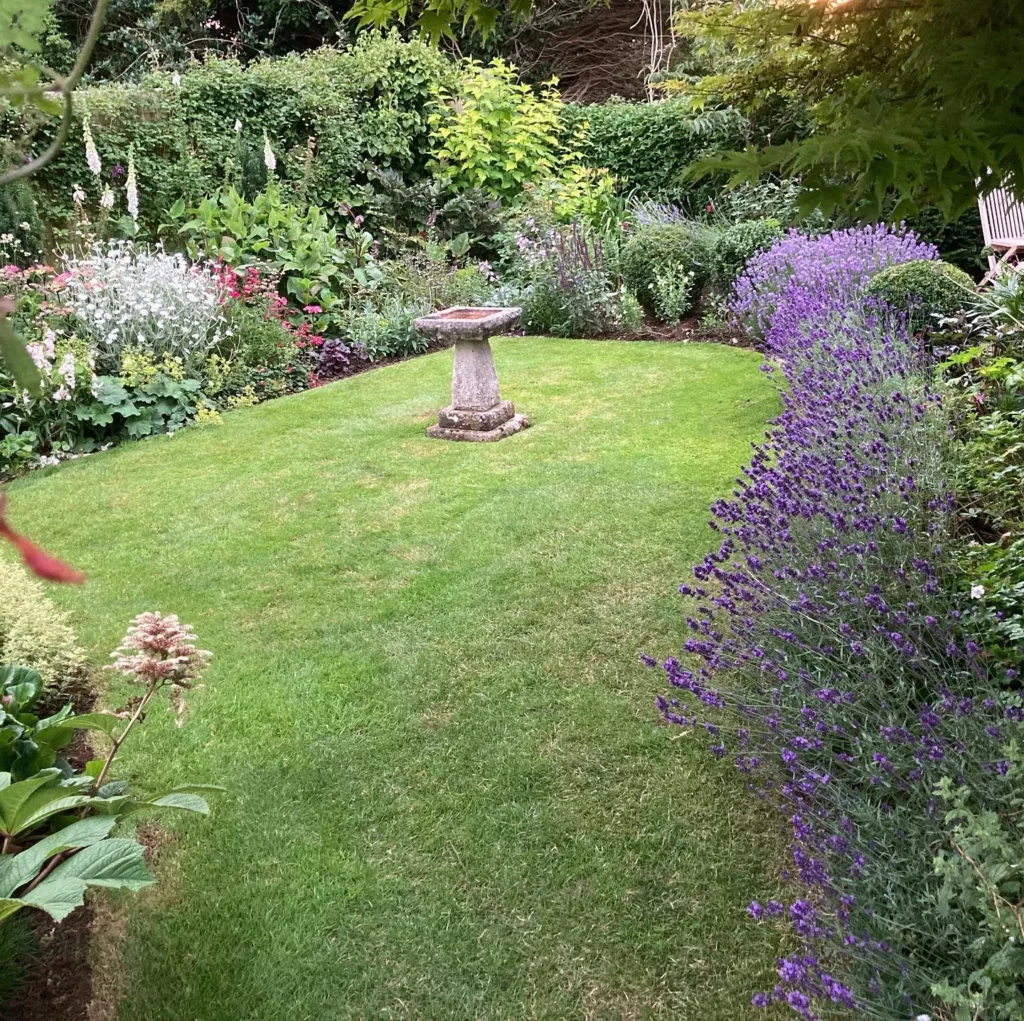
Regular pruning and maintenance are crucial for keeping your lavender hedge in optimal condition, promoting healthy growth, and maintaining its desired shape.
In this section, we will provide you with practical guidance on how and when to prune your lavender hedge, as well as tips for ongoing maintenance activities, including fertilizing and pest control.
When to Prune:
Pruning your lavender hedge at the right time is essential to ensure its health and vitality. The ideal time for pruning is in early spring, just as new growth begins to emerge. Avoid pruning too late in the season, as it may hinder the development of flowers.
How to Prune:
Pruning a lavender hedge requires a careful approach to preserve its natural shape and prevent damage to the plants. Follow these simple steps:
- Start by removing any dead or damaged branches by cutting them back to the healthy wood.
- Trim the outer edges of the hedge slightly, ensuring a neat and uniform appearance.
- For an attractive and bushier hedge, cut back one-third of the previous year’s growth. Be careful not to prune too much, as it can stress the plants.
Ongoing Maintenance:
Maintaining a healthy lavender hedge goes beyond pruning. Here are some additional maintenance tasks to keep your hedge thriving:
- Fertilizing: Lavender hedges benefit from an annual application of well-balanced organic fertilizer in early spring. This will provide the necessary nutrients for vigorous growth and vibrant blooms.
- Pest Control: Monitor your lavender hedge regularly for common pests such as aphids or spider mites. If detected, use organic insecticides or homemade remedies to prevent infestations and protect your plants.
Enjoying the Aromatic Benefits of a Lavender Hedge
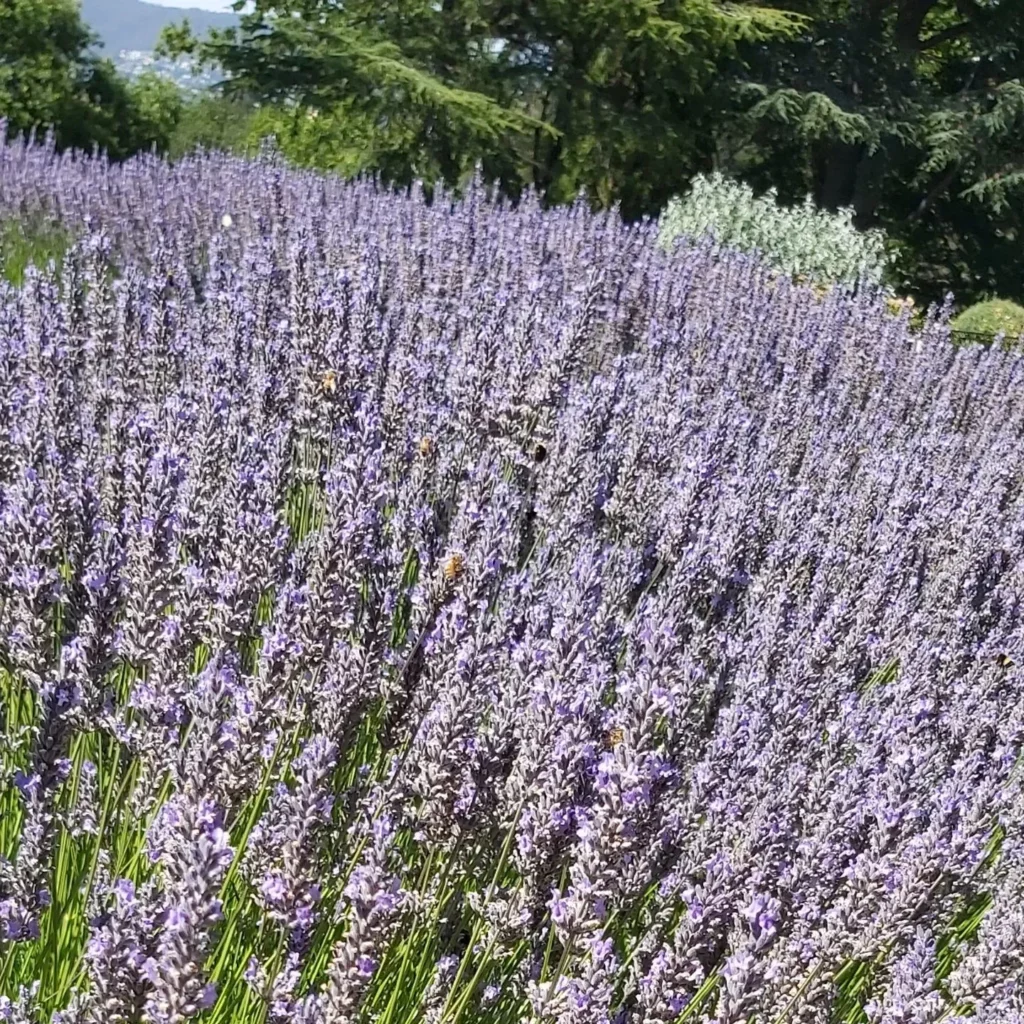
One of the main reasons to plant a lavender hedge is to experience the delightful fragrance it offers. The aromatic benefits of a lavender hedge go beyond just its pleasant scent, as it can enhance your garden and provide several other advantages.
- Enhances your garden: The enchanting aroma of lavender can transform your garden into a sensory paradise. The sweet, floral fragrance creates a soothing and inviting atmosphere, making it a perfect addition to any outdoor space.
- Promotes relaxation: Lavender is renowned for its calming properties. The scent of lavender has been proven to reduce stress levels, promote better sleep, and create a tranquil ambiance, allowing you to unwind and find peace in your garden.
- Repels certain pests: The aromatic oils present in lavender are a natural deterrent for pests such as mosquitoes, flies, and moths. Planting a lavender hedge can help keep these unwanted insects at bay, allowing you to enjoy your garden without the annoyance of buzzing or biting pests.
Lavender Hedge Design Ideas for Your Garden
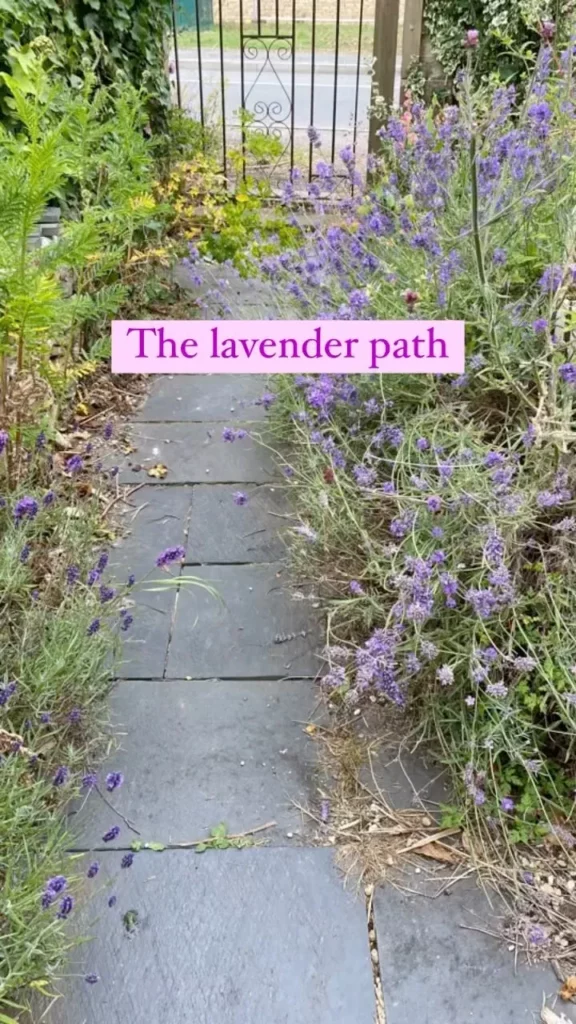
Enhance the beauty of your lavender hedge by pairing it with companion plants that complement its colors and fragrances.
For instance, planting purple-flowering plants like Russian sage or catmint alongside your lavender hedge can create a stunning color combination. Additionally, herbs like thyme and rosemary can release delightful scents and attract beneficial pollinators.
A lavender hedge not only offers aromatic beauty but also adds visual appeal to your garden. The design of your lavender hedge can contribute to the overall aesthetic of your outdoor space, creating a stunning focal point and enhancing the existing landscape. Whether you have a small city garden or a vast countryside estate, there are various design ideas to consider when planning your lavender hedge.
1. Linear Lavender Hedge
The linear lavender hedge is a classic and timeless design choice. Planted in a straight line or gently curved along a pathway or boundary, this style brings a sense of order and structure to the garden.
The linear lavender hedge is perfect for formal and contemporary gardens, and its clean lines create a visually pleasing and cohesive look.
2. Curved Lavender Hedge
If you prefer a softer and more organic look, a curved lavender hedge can add a touch of elegance and whimsy to your outdoor space.
The gentle curves of this design mimic the natural flow of the landscape, creating a harmonious and inviting atmosphere. The curved lavender hedge works well in cottage gardens and informal landscapes, adding a subtle element of surprise and charm.
3. Informal Lavender Hedge
An informal lavender hedge allows the plants to grow more freely, creating a relaxed and naturalistic appearance. This design is characterized by varying heights, irregular spacing, and a more casual approach to pruning.
An informal lavender hedge is well-suited for rustic and cottage-style gardens, where a less structured and more relaxed aesthetic is desired.
4. Colorful Lavender Hedge
While lavender is known for its purple blooms, there are various lavender varieties that offer different hues, such as pink, white, and blue.
Consider incorporating different lavender colors into your hedge design to create a vibrant and eye-catching display. By strategically planting lavender varieties with complementary colors, you can add depth and visual interest to your garden.
5. Companion Plantings
Enhance the beauty of your lavender hedge by pairing it with companion plants that complement its colors and fragrances.
For instance, planting purple-flowering plants like Russian sage or catmint alongside your lavender hedge can create a stunning color combination. Additionally, herbs like thyme and rosemary can release delightful scents and attract beneficial pollinators.
Lavender Hedge: Environmental and Health Benefits

Beyond its visual and aromatic qualities, a lavender hedge provides several environmental and health benefits. Planting a lavender hedge is a sustainable landscaping choice that can have a positive impact on both your surroundings and your well-being.
Environmental Benefits
A lavender hedge offers numerous environmental advantages, making it an eco-friendly choice for your garden. Here are some of the key environmental benefits:
- Attracts beneficial pollinators: Lavender flowers are highly attractive to bees, butterflies, and other important pollinators. By planting a lavender hedge, you can create a thriving habitat and promote biodiversity in your garden.
- Improves air quality: Lavender has natural air purification properties. The plants release aromatic compounds that can help cleanse the air by reducing pollutants and odors.
- Mitigates soil erosion: The dense foliage and deep root system of a lavender hedge help prevent soil erosion, especially on slopes or areas prone to erosion. The roots hold the soil in place, reducing the risk of runoff and preserving valuable topsoil.
Health Benefits
In addition to its positive impact on the environment, a lavender hedge can also contribute to your overall health and well-being. The health benefits of a lavender hedge include:
- Relaxation and stress relief: The soothing scent of lavender has been shown to promote relaxation and reduce stress levels. Studies have revealed that the fragrance of lavender can help lower anxiety, promote better sleep, and create a calming atmosphere.
- Aromatherapy benefits: Lavender is widely used in aromatherapy for its therapeutic properties. The essential oils derived from lavender flowers can be used to alleviate headaches, improve mood, and support overall mental and emotional well-being.
- Natural pest repellent: Lavender contains natural compounds that act as a deterrent to pests such as mosquitoes, flies, and moths. Having a lavender hedge can help keep these unwanted insects at bay, allowing you to enjoy your outdoor space without the annoyance of pests.
Lavender Hedge: Troubleshooting and Common Issues

Just like any other plant, lavender hedges may encounter certain issues along the way. It’s important to be aware of these common problems and have the know-how to troubleshoot them effectively. By addressing these issues early on, you can ensure the health and vitality of your lavender hedge.
One of the most common issues with lavender hedges is the occurrence of diseases. Powdery mildew and root rot are two common diseases that can affect lavender plants.
To tackle powdery mildew, ensure good air circulation and avoid overhead watering. For root rot prevention, make sure the soil is well-draining and avoid overwatering.
Pests can also pose a threat to your lavender hedge. Aphids, spider mites, and slugs are some of the pests that may target lavender plants.
To combat these pests, regularly inspect your plants for any signs of infestation. Introduce natural predators like ladybugs and lacewings, or consider using environmentally friendly pest control products.
Environmental stressors, such as extreme temperatures and inadequate sunlight, can also impact the health of your lavender hedge.
It is essential to choose a suitable location for your hedge that offers the right amount of sunlight and protection from harsh conditions. Additionally, monitor watering practices to ensure proper hydration without waterlogging the roots.
FAQ
Q: How do I plant a lavender hedge?
A: To plant a lavender hedge, follow these steps: 1) Choose the right lavender varieties for your hedge. 2) Find the perfect location with adequate sunlight and well-draining soil. 3) Prepare the soil by testing the pH, improving drainage, and enriching it with organic matter. 4) Space the plants properly and dig holes for each lavender plant. 5) Place the lavender plants in the holes, ensuring they are secure. 6) Water the hedge thoroughly and mulch the area. 7) Regularly prune and maintain the lavender hedge to keep it healthy and in shape.
Q: How do I choose the right lavender varieties for my hedge?
A: When selecting lavender varieties for your hedge, consider factors such as height, fragrance, and hardiness. Some commonly recommended varieties for hedging include English lavender (Lavandula angustifolia), French lavender (Lavandula dentata), and Spanish lavender (Lavandula stoechas). Research the specific characteristics of each variety and choose the ones that best suit your preferences and gardening conditions.
Q: What should I consider when finding the perfect location for my lavender hedge?
A: The success of your lavender hedge depends on the location you choose. Consider the following factors: 1) Sunlight: Lavender thrives in full sunlight, so choose a location that receives at least 6-8 hours of direct sunlight per day. 2) Soil conditions: Lavender prefers well-draining soil, so avoid areas with heavy clay or poorly draining soil. 3) Proximity to other plants: Avoid planting the lavender hedge near trees or other plants that may shade or compete with it for resources.
Q: How do I prepare the soil for planting my lavender hedge?
A: Prepare the soil for your lavender hedge by following these steps: 1) Test the soil’s pH levels to ensure it is slightly alkaline (around 7.0-8.0). 2) Improve drainage by adding organic matter such as compost or well-rotted manure to the soil. 3) Enrich the soil with nutrients by incorporating a balanced organic fertilizer. 4) Remove any weeds or grass in the area where you plan to plant the hedge. Thoroughly mix the amendments into the soil and ensure it is loose and well-draining.
Q: How do I properly plant my lavender hedge?
A: Follow these steps to plant your lavender hedge: 1) Dig holes that are slightly larger than the lavender plant’s root ball and spaced according to the desired hedge density. 2) Place each lavender plant in a hole, making sure the top of the root ball is level with or slightly above the soil surface. 3) Backfill the hole with soil, gently firming it around the roots. 4) Water the newly planted lavender hedge thoroughly to settle the soil and eliminate any air pockets.
Q: How should I water and mulch my lavender hedge?
A: Proper watering and mulching are essential for a healthy lavender hedge. Water the hedge deeply but infrequently, allowing the soil to dry out between watering sessions. Apply water to the soil around the base of the plants rather than overhead watering. Mulch the area around the hedge with a layer of organic mulch, such as wood chips or straw, to help conserve moisture, suppress weeds, and maintain a stable soil temperature.
Q: How do I prune and maintain my lavender hedge?
A: Regular pruning and maintenance are important for keeping your lavender hedge in good shape. Prune the hedge annually in early spring or after the flowering season ends. Trim back the foliage by about one-third, avoiding cutting into old wood. Remove any dead or diseased branches. Additionally, regularly monitor and control pests or diseases that may affect the health of the hedge. Fertilize the lavender hedge once or twice a year with a balanced organic fertilizer to provide essential nutrients.
Q: What are the aromatic benefits of a lavender hedge?
A: A lavender hedge offers delightful aromatic benefits to your garden. The scent of lavender can enhance the ambiance, promote relaxation, and provide a calming effect. It can also act as a natural air freshener, making your garden area more fragrant. Additionally, the strong fragrance of lavender can help repel certain pests, such as mosquitoes and flies, making your outdoor space more enjoyable.
Q: How can I incorporate lavender hedge design ideas in my garden?
A: A lavender hedge can add visual appeal to your garden. Consider different design ideas, such as creating geometric patterns, curved lines, or varying heights of the hedge. You can also combine different lavender varieties to add more colors and textures. Companion plants, such as roses or ornamental grasses, can complement the lavender hedge and create a beautiful garden composition.
Q: What are the environmental and health benefits of a lavender hedge?
A: Planting a lavender hedge provides several environmental and health benefits. Lavender attracts beneficial pollinators like bees and butterflies, contributing to the overall biodiversity of your garden. The plants can also help improve air quality by absorbing pollutants. Additionally, the aroma of lavender has been traditionally used for its calming and soothing properties, promoting relaxation and overall well-being.
Q: How do I troubleshoot and address common issues with my lavender hedge?
A: Common issues with a lavender hedge may include diseases, pests, or environmental stressors. To troubleshoot these problems, regularly monitor the plants for signs of disease or pest infestation, such as yellowing leaves or distorted growth. Take prompt action by applying appropriate organic treatments or solutions recommended for the specific issue. Ensure the hedge receives proper sunlight, water, and soil conditions to minimize stress on the plants.





